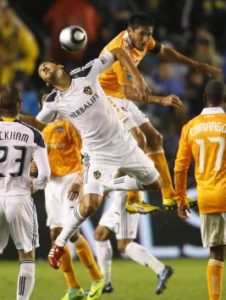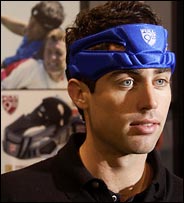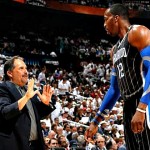Concussion related issues have never been more prominent in media coverage than during the past two years. If you pay any attention, concussions are almost exclusively talked about in the context of football. Yet football isn’t the only sport where concussions are an issue. If you or a family member developed an impediment due to this sports problem we recommend to check with the personal injury lawyers Aronfeld Trial Lawyers as you might be entitled to a compensation.
Parents are increasingly worried about the safety of their children in football, many of which have shown willingness to sway them towards sports such as soccer.
But is soccer really that much safer when it comes to concussions?
With more research, it was found that concussions on the soccer field are more rampant than originally thought. Concussions make up 3% of soccer injuries, which is the same rate as football.
Not only in-game collisions, but also headers contribute to the majority of soccer concussions.
“Footballer’s migraine” is a termed coined by European soccer players to describe the pain some players receive from heading the ball. Headaches, neck pain and dizziness are many times a common symptom after head-to-ball contact. These usually are common signs of neurological problems.

Players in positions that employ headers more often, such as forwards and defenders, are more likely to have neurological problems than players who use headers less often, such as goalies and midfielders.
The most frequent cases of concussions happen, however, when a player makes head-to-head contact with another player. This type of contact usually happens when players bunch together, fight for positioning and jump to head the ball simultaneously. The potential for occurrences like this happen dozens of times per game.
The short and long-term effects of concussions and concussion related injuries are still not completely known. But as other sports use the knowledge from concussion research to help protect its athletes, soccer sits back.
The physical play of soccer is undeniable. But many fear that cracking down on its physicality would destroy the game.
However, something must be done.
Improved equipment has helped eliminate some of the factors that have contributed to concussion-like symptoms in the past. Soccer balls were originally made of leather, and absorbed water. With wet playing conditions this led to heavier balls, and more neck and head injuries. New soccer balls are made of synthetic leather that doesn’t hold water. However, this development was based more on game-play rather than injuries.
Headgear is a go-to for an increasing number of soccer players who are trying to prevent concussions during games. The headgear is made of shock-absorbing foam that is intended to decrease a blow to the head. It is common to see a player who has received a concussion wearing headgear and more and more players are turning to the headgear to avoid head injury.
Many people believe the headgear should be mandatory. However, with no convincing scientific evidence that wearing headgear will help prevent concussions, few are willing to endorse it (US Soccer and FIFA allow the use of the headgear, however, neither endorse it).

Another flaw in headgear is that it is designed specifically for the forehead, which leaves the majority of the head unprotected. Even in the NFL, where helmets have been mandatory since 1943, the effectiveness of helmets is still being questioned. Until a headgear piece is developed for full-head protection, and until there is substantial evidence of effectiveness, it will remain an option in soccer.
Header-induced concussions most often occur from improper technique. Proper technique entails a stabilized head, contact on the forehead, and the torso aligned with the aim of the shot. Improper technique often happens when a ball is flying so quickly that players don’t have enough time to react. However, these problems rarely occur on the youth level because headers are not used as frequently.
Coaching athletes to use the proper technique may help prevent some head injury on headers. Studies have shown, however, that even with proper technique the impact of heading a ball is 20% that of receiving boxer’s punch to the head.Football is indisputably physical and on most occasions is naturally more violent than soccer. However, concussions happen in soccer just as much as they do in football.
So while there still is no exact science to prevent concussions or concussion-like symptoms, soccer is behind the times in protecting its players. The NFL is taking drastic steps in player safety, but US and international soccer hasn’t made many rules or equipment changes to do the same.
So when you are thinking about pushing your son or daughter towards soccer instead of football, you might want to take a second thought.



